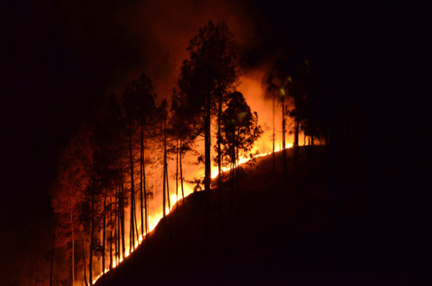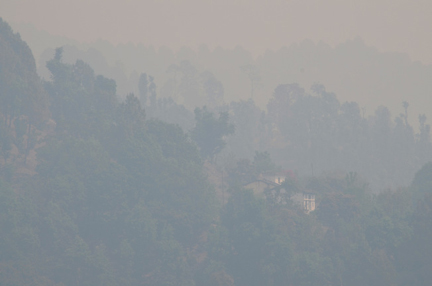Agricultural Crop Burning-Alternatives
-Susan Sharma
One of the major reasons for the increased pollution levels in land locked cities like Delhi and Gurugram , has been identified as agricultural crop burning. A brief research on the Internet gives us research reports and practical measures tried and tested
elsewhere. These can be implemented all over India by agriculturists with very positive outcomes.
In the recent past some bright minds working as part of State Bank of India Youth for India fellowship program , have gone deeper and implemented successful projects in the area of agricultural farming, worthy of emulating. Two blogs which I found on
the SBI Youth for India Blog mention the possibility of reducing farm and forest emissions, if only awareness and some amount of hand holding is available in rural areas. Links to these blogs are given below.
Excerpts from a fellow’s Diary – Farming Needs Improved Techniques
Posted on June 11, 2014by SBI Youth For India
Amrita Bhattacharya talks about avoidable forest fires
Posted on May 13, 2016by SBI Youth For India
SBI YFI fellow Taher, writes about working with farmers on soil solarisation project. Traditionally, farmers prior to sowing the seeds would prepare the ground by piling leaves, biomass and forest wood up to a height of 2-3 feet and then burning it as
they believe it destroys the weeds and leads to healthy plants. Paddy is then sown after the first shower. Approximately 750-800 kg of bio-mass is used for 1/4 acre. Apart from the damage to the environment and pressure on forest resources, it is a laborious
process, involving 3-4 months of activity. Through soil solarisation process, the ground is prepared by spreading a layer of cow dung or vermi-compost or ash from domestic fires and then covering it with a plastic sheet for about 20 days. After this, with
the first showers the paddy is sown. The results have been encouraging and farmers are getting convinced about the merits of this process.
Taher Sarthawala worked with BAIF in Lachakadi in Gujarat.
Plastic sheet therapy for crop residues
Here is an excerpt from his blog, which documents the initial struggle in changing mindsets.
"After several meetings and discussions, some of the farmers in the Molamba village in South Gujarat agreed to try out the SST procedure. Jayanti Bhai a farmer was one such volunteer. He is a small-time farmer, whose livelihood
depends on the cultivation of rice and rain fed vegetables. During the peak summer months of April and May, Jayanti Bhai with his wife and ailing mother would go to the jungle to cut trees and collect dry leaves. They would spend 3-4 hours a day for a month
or so and would also accumulate cow dung all year-round for biomass. In June, before the first shower he would burn the field containing the pile of biomass. Initially he told us to stop wasting our time and energy because weeds can only be destroyed by burning.
When we told him that all that he had to do was to work with us on a piece of land, he finally agreed. The technique worked and the results were out for everyone to see. Jayanti Bhai could not believe that his work could be made so much easier by the improvisation.
Later he presented his views during our exposure visits. He said,“Now is the time to move away from our traditional methods towards new-and-improved techniques. If we don’t, then agriculture will no more be a viable option and we will have to look elsewhere
for our livelihood. Using this new method, the quality of seedlings is better, with more leaves and absolutely no weeds. The SST technique requires lesser time and saves us the drudgery of having to go into the jungle in search of biomass.”
The astonishing results took the farmers by surprise. Ironically, fields that had been treated with Rabb, which was supposed to kill weeds, had more weeds than those that had solarized soil.
The results from the SST technique not only attracted farmers from other villages but also forest officers, who were having a tough time dealing with the traditional method, due to which the forests were losing their green cover. The new technique impressed
the forest officers to such an extent that it got sponsorship from the Forest Department."
An excerpt from Amrita Bhattacharya's blog reads
"The forests in and around the area I live in Uttarakhand Pithoragarh Berinag Forests is on fire for close to a month, only now I have seen some posts in the media about the devastating fires that are raging in Uttarakhand. Reportedly nearly 1900 hectares
of forest land has been destroyed and the fires still continue to rage engulfing the region in a haze of smoke. The locals say it has not been this bad in a long time, as the dry pine needles prone to fires are still more vulnerable in the drought like state
where it has not rained for past several months.
The concern is even more when you find out that the fires are often man made and intentional, showing a serious apathy towards the very forests that maintain the ecological balance of the mountains.
The pine trees which are often tapped for resin, is anyway left weak and the inflammableres in exposed on the bark. These trees after they are burnt in forest fires dry up and are cut and sold."

Forest fires
Pollution due to crop burning is not just India's problem but a universal one. Many developing countries faced it, but found alternatives for this "short cut" in farming practices.
- Burning wheat residue results in a loss of nearly all the nitrogen and approximately half of the sulfur and phosphorus present in the residue.
- Research shows that standing wheat stubble helps store 76% of over-wintering precipitation compared to 57% when the stubble is burned in the fall.
- Generally, every inch of water stored produces from 5 to 7 bushels of grain per acre.
In the year 2004, the State of Washington , Department of Ecology Air Quality Program prepared a detailed report entitled "Agricultural Practices To Help Eliminate or Reduce The Need to Burn"
The report observes
“Burning has been used as a quick residue removal tool. Long-term, repeated field burning along with tillage has been shown to be detrimental to soil productivity.
However, burning might be a limited tool to manage excess residue and Increased public concern and compliance with air quality regulations also must be considered. “
Here are some simple alternatives suggested.
“Before using fire as a tool, growers should consider other management practices and factor in economics together with environmental impacts on water conservation, erosion control, and air quality, when making decisions on which to use.”
At harvest, the stems, stalks and leaves from a newly harvested crop are left in the field. This
1.Protects the soil from erosion by wind and rain
2.Reduces water run off from the fields during the rains.
3.Conserves water
4.Adds organic matter to the soil.
5.Reduces labour, fuel and equipment wear.
6.Provides habitat for wildlife.
7.Reduces release of carbon gases.
At planting, instead of disturbing (plowing or tilling) the whole field, seeds are planted in very small grooves or strips. This keeps most of the old stems, stalks and leaves (crop residue) intact on the soil surface to protect the soil while new plants
are growing.

Hill pollution